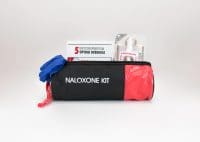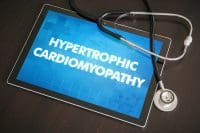PREGNANCY AND CHILDBIRTH are two of the most exciting life events that families will experience. For one in eight individuals giving birth, however, this time that was anticipated to be beautiful and filled with happiness is plagued with feelings of sadness, anxiety, worthlessness, guilt, and withdrawal. Each year in the United States, approximately one million people are diagnosed with postpartum depression (PPD), and the incidence is on the rise (Centers for Disease Control and Prevention [CDC], 2023). Experts suggest the number of people affected may be much higher, as nearly 50% of individuals who experience symptoms go undiagnosed (Langdon, 2023). The number of Kansans reporting symptoms of depression following a live birth is nearly 15%, slightly higher than the national average (Bauman et al., 2020).
Differentiating Postpartum Baby Blues from Postpartum Depression
Up to 80% of individuals will experience some degree of sadness and worry in the first few days after giving birth, commonly referred to as the “baby blues.” These feelings are considered normal and are thought to be caused by the decreases in estrogen and progesterone that occur after birth. Lack of sleep and inadequate nutrition may also be contributing factors. The baby blues typically resolve spontaneously within two to four weeks after birth (March of Dimes, 2021).
When the baby blues continue for an extended period, the individual may be experiencing PPD, a more severe condition that can cause persistent worrying, sleep disturbances, difficulty concentrating, lack of self-care, and thoughts of harming oneself or the infant. Postpartum depression does not just affect the parent; it can disrupt bonding and have a negative impact on the infant’s growth and development (Oliveira et al., 2022). Individuals experiencing these symptoms longer than four weeks or those having thoughts of harming themselves or their infant should notify their healthcare provider immediately.
Screening and Treatment
The Edinburgh Postnatal Depression Scale is a common screening tool used to determine if a parent suffers from anxiety, depression, or self-harm. This questionnaire contains ten short statements about how the individual has felt during the past week and only takes a few minutes to complete. Each statement has four options, with the individual choosing the one that best describes their feelings. After completion, each response is scored from 0-3 based on severity. A score of 12 or 13 indicates the individual is likely experiencing PPD and should be further evaluated to confirm the diagnosis and establish a treatment plan (Cox et al., 1987).
Treatment of PPD should be individualized and may include counseling with a mental health professional, support groups with others experiencing PPD, social support from friends and family, and in some instances, medications may be prescribed. Selective serotonin reuptake inhibitors (SSRIs), such as sertraline and fluoxetine, and serotonin and norepinephrine reuptake inhibitors (SNRIs), such as duloxetine and desvenlafaxine are the most common medications used to relieve symptoms of PPD. Tricyclic antidepressants and bupropion may also be considered (American Psychiatric Association, 2020). Many of these medications are safe to take while breastfeeding, but it is crucial to prioritize the individual’s mental health over the benefits of the infant receiving breast milk.
While treating PPD with antidepressants is common, these medications take three to four weeks to take effect. Recently the U.S. Food and Drug Administration (FDA) has approved two new medications for the treatment of PPD that show great promise in relieving PPD symptoms in less time. Zulresso (brexanolone) is a progesterone metabolite given by intravenous infusion over 60 hours. The medication has been shown to rapidly improve symptoms; however, there are barriers to access regarding required hospitalization for the patient, facilities needing certification to administer it, and it not being readily available in all areas (Mughal et al., 2022).
The latest treatment option was approved by the FDA in August 2023. Zurzuvae (zuranolone) is also a progesterone metabolite and the first oral medication indicated specifically for PPD in adults. Clinical trials concluded that individuals who received Zurzuvae daily for 14 days showed significant improvement in their depression symptoms compared to those in the placebo groups. During follow-up analysis, the effects of treatment were maintained for four weeks after taking the last dose (U.S. Food & Drug Administration, 2023).
Significance for Nurses
Recognizing the signs of postpartum depression is not just the responsibility of obstetric and women’s healthcare workers. At some point in their careers, nearly every nurse will have contact with a patient, family member, or friend who is pregnant or has recently delivered a baby. Knowing the signs to watch for, how to screen for depression, and what treatment options are available are essential steps to minimizing harm and improving outcomes for individuals and families who may be affected by perinatal depression.
References
American Psychiatric Association. (2020, October). What is peripartum depression (formerly postpartum)? https://www.psychiatry.org/patients-families/postpartum-depression/what-is-postpartum-depression#section_3
Bauman, B.L., Ko, J.Y., Cox, S., D’Angelo, D.V., Warner, L., Folger, S., Tevendale, H.D., Coy, K.C., Harrison, L., & Barfield, W.D. (2020, May 15). Vital signs: Postpartum depression symptoms and provider discussions about perinatal depression – United States, 2018. Morbidity and Mortality Weekly Report, 69(19), 575-581. https://www.cdc.gov/mmwr/volumes/69/wr/mm6919a2.htm?s_cid=mm6919a2_w
Centers for Disease Control & Prevention. (2023, May 1). Depression during and after pregnancy. https://www.cdc.gov/reproductivehealth/features/maternal-depression/index.html.Cleveland Clinic. (2022, April 12). Postpartum depression. https://my.clevelandclinic.org/health/diseases/9312-postpartum-depression
Cox, J. L., Holden, J. M., & Sagovsky, R. (1987). Detection of postnatal depression: Development of the 10-item Edinburgh Postnatal Depression Scale. British Journal of Psychiatry, 150, 782-786.
Langdon, K. (Ed.). (2023). Postpartum depression statistics. PostpartumDepression.org. https://www.postpartumdepression.org/resources/statistics/
March of Dimes. (2021, May). Baby blues after pregnancy. https://www.marchofdimes.org/find-support/topics/postpartum/baby-blues-after-pregnancy
Mughal, S., Azhar, Y., & Siddiqui, W. Postpartum depression. StatPearls. Retrieved October 16, 2023, from https://www.ncbi.nlm.nih.gov/books/NBK519070/
Oliveria, T.A., Luzetti, G.G., Rosalem, M.M., & Neto, C.M. (2022, May 4). Screening of perinatal depression using the Edinburgh Postpartum Depression Scale. Revista Brasileira de Ginecologia e Obstetricia, 44(5), 452-457. https://doi.org/10.1055/s-0042-1743095
U.S. Food & Drug Administration. (2023, August 4). FDA approves first oral treatment for postpartum depression. https://www.fda.gov/news-events/press-announcements/fda-approves-first-oral-treatment-postpartum-depression




























